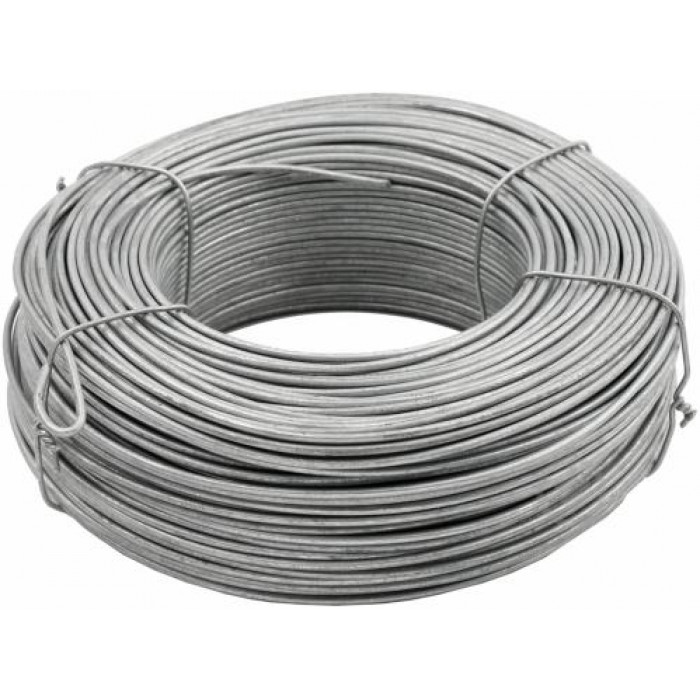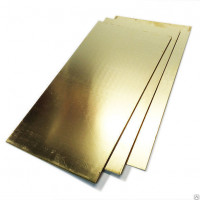Ternopil wire galvanized 0.5-12 mm, spring st70, stainless, egoza (Metallobaza) cutting delivery
Galvanized wire is a long-length galvanized metal product made in the form of a thread or cord, used as semi-finished products in the production of cables, springs, ropes, grids, electrodes and electric wires. In most cases, the cross section of galvanized wire is round, but it can also be oval, square, hexagonal and trapezoidal.
The wire is produced with a diameter of 0.20 to 8 millimeters. Produced by cold drawing. The initial raw material from which the wire is produced is wire rod, made by hot rolling with diameters from 5.5 to 9 millimeters. Galvanized wire is supplied in coils from 20 to 200 kg, as well as in coils from 800 kg to 1.2 tons. Zinc coating improves the anti-corrosion properties of the wire and significantly expands its scope.
Products made of galvanized wire withstand the negative effects of the external environment and increase their service life. In addition, such a wire has the best aesthetic properties. Heat-treated galvanized wire is commonly used in the production of nails with a diameter of 1 to 6 mm. This wire can also be used in the manufacture of wicker netting and for hanging various cables. Galvanized wire can be used in grounding devices, boxes, fastening boxes, as well as in the production of metal brushes, bucket handles, paper clips, staples, rings for key chains and hangers for clothes. The wire can be used for reinforcing power wires and for laying various cable networks.
Stainless wire is a type of rolled metal made of heat-resistant, anti-corrosion and high-alloy steel, made in the form of a long universal structure resembling a thread or cord. As a rule, it has a round cross section. Due to its properties, stainless wire has been widely used in many areas: mechanical engineering, oil production, chemical industry, construction, food industry, medicine and much more. Classification Four types of stainless wire are produced: knitting; cold-worked; welding wire; spring stainless wire. According to the production method, cold-rolled and hot-rolled wire are divided. Depending on the type of processing of the finished product (metal surface), stainless steel wire is divided into the following types: oxidized; copper-plated; light wire (no oxides). According to the accuracy of execution, stainless steel wire is divided into normal and high accuracy. Depending on the physical properties of stainless (n / f) wire, the first and second classes of plasticity of the product are distinguished. Marking, packaging and storage Stainless wire is produced in accordance with GOST 18143-72 from anti-corrosion, heat-resistant alloy steel with a cross section of 0.2 to 7.5 mm. Wire marking determines its chemical composition, production technology and type of metal surface treatment. The numbers indicate the percentage of elements that define the main properties of the product. The presence of other elements, the content of which does not exceed 1%, is not indicated in the labeling. The letter “X” is indicated in the designation of cold-rolled stainless steel wire. Oxidized stainless steel wire has a tint color and is marked with the letter "T". Basically, this type of marking is subjected to wire produced by heat treatment (hot-rolled). Light stainless wire without tarnish and oxides is designated "TC". The letter "P" is added to the marking of the product of increased strength. The plasticity class is indicated by the corresponding numbers: 1 - the first, 2 - the second. Stainless steel wire requires careful handling during transportation and storage. Depending on the diameter, it is packed in coils or wound on coils and protected from mechanical damage by film or paper. Transportation is carried out mainly in covered vehicles. Stainless steel wire is stored in closed heated warehouses. They produce wire from structural carbon and alloy steels, as well as from alloys with special properties and non-ferrous metals. Accordingly, its physical and mechanical properties are largely determined by the chemical composition of the metal from which it is made. Carbon steels differ in the content of the mass fraction of carbon: low-carbon steels contain up to 0.25% carbon; medium carbon - from 0.25% to 0.55%; high carbon - from 0.55% to 2.14%. In addition to iron and carbon, all carbon steels contain a small amount of basic impurities - manganese, magnesium, silicon, chromium, nickel, and sulfur. The composition of alloyed grades and special alloys is enriched with additives from a number of chemical elements - nickel, manganese, aluminum, silicon, titanium, molybdenum, copper, etc. Therefore, wire made of such materials has a certain set of mechanical and physical characteristics.
Galvanized wire subsectionlyatsya on several major brands, namely:
10270-1-SL-Zn is a wire with lower than usual tensile strength. It is used where the wire is under static load. It is mainly used for the production of industrial screens and screens.
10270-1-SM-Zn is the most widely used standard tensile wire. In most cases, it is used for the production of galvanized springs operating under static load. It is used for the production of compression springs, tension springs, torsion springs, torsion springs, etc. with high static loads and low - dynamic.
It can be supplied both in standard and patent versions. The patented wire is tempered with a carefully controlled temperature gradient. As a result, less stress remains in the wire, which makes it possible to twist springs with a smaller radius without loss of strength characteristics, and also to use this spring under dynamic load.
10270-1-SH-Zn - wire with increased tensile strength. It is used in extremely critical structures, where the maximum margin of safety of the spring is needed. On average, the tensile strength of the SH grade is 10% higher than that of the standard SM. This grade is also used for galvanized springs under static load.
It can be supplied both in standard and patent versions. The patented wire is tempered with a carefully controlled temperature gradient. As a result, less stress remains in the wire, which makes it possible to twist springs with a smaller radius without loss of strength characteristics, and also to use these springs under dynamic load.
10270-1-DH-Zn is a higher tensile wire like SH. Its main advantage is that this wire is supplied only in a patented version, i.e. its direct purpose is dynamic and highly dynamic loads on a spring, springs of complex structures, etc.
The manufacturer produces several types of Egoza threads. All products have a common characteristic: they are made of steel or galvanized strip and have sharp edges. All varieties have high strength and reliability, have a long service life, can be mounted both along the perimeter of existing fences, and independently, relying on poles.
The main purpose of the Egoza branch is to protect objects from unauthorized access. In cattle pastures, it is used to prevent or stop an animal from moving outside a designated area. In industrial, military, secret, protected structures, in water protection and nature protection zones, in places with limited access, barbed wire acts as a protective barrier that allows you not to block visibility and access to natural light, as in the case of solid fences.
Depending on the type of product, its installation can be carried out in different ways. Most often this stream is used for:
creation of fences around the perimeter of roofs;
mounting on vertical racks (multilevel);
installation on supports with a horizontal tension cord for 10-15 sections;
lying on the ground (rapid deployment).
All these features make barbed wire a popular solution for use in various types of structures. Galvanized wire is used to secure the chain-link mesh to the supports of the future fence. Its use in construction is very extensive. Wire is used as a fastening material for a variety of tasks. Buy wire only from trusted manufacturers who have a license to sell such products to avoid buying defective goods. The wire is resistant to corrosion, very strong and durable. Wire is produced in coils of a certain length. Wire is made with a diameter from zero point twenty hundredths to eight millimeters. Finished coils weigh from twenty to two hundred kilograms, and in coils weighing from eight hundred to one thousand two hundred kilograms.
No questions about this product, be the first and ask your question.


